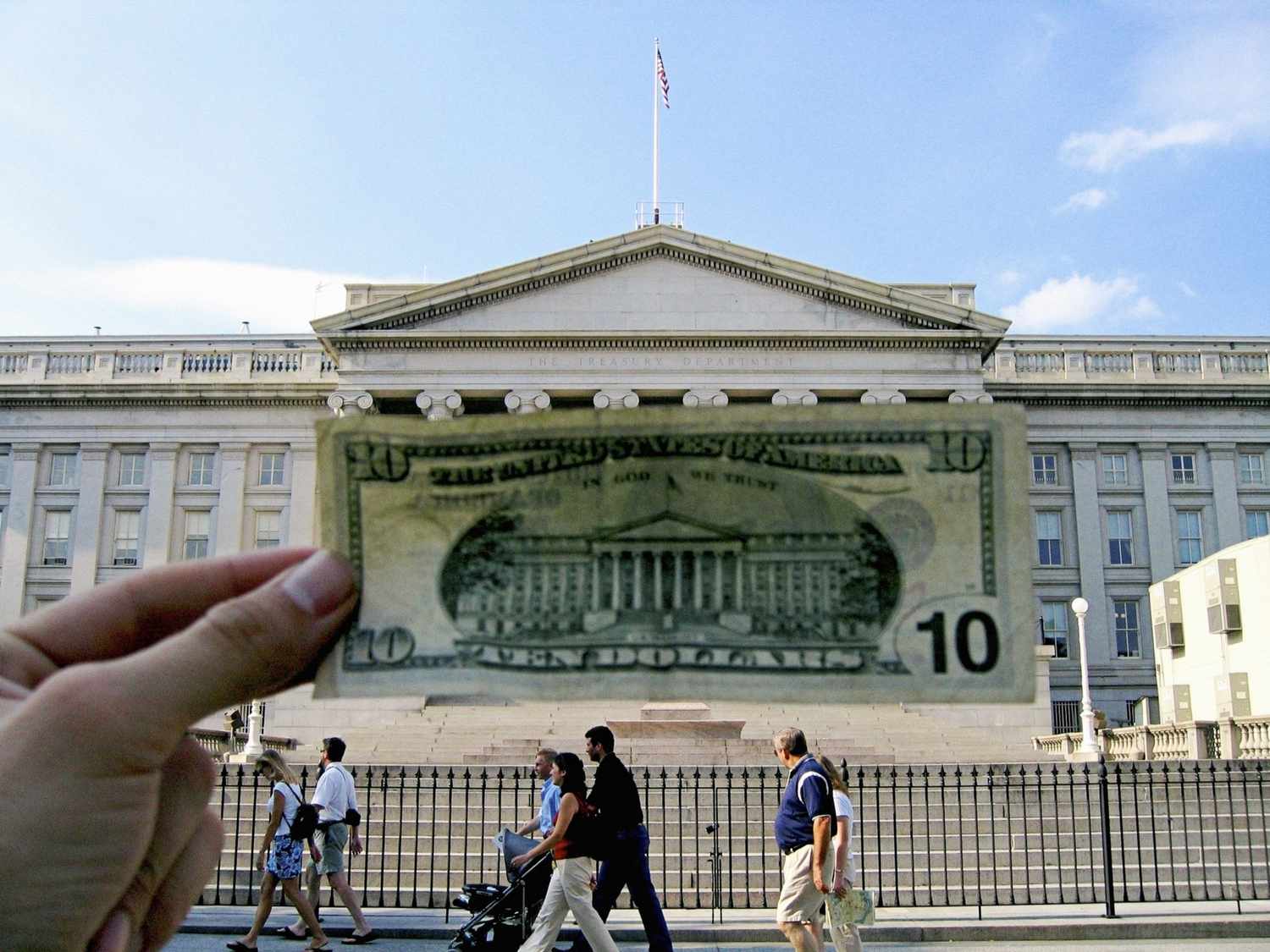The U.S. Treasury, created in 1789, is the government department responsible for issuing all Treasury bonds, notes, and bills. The Internal Revenue Service (IRS), the U.S. Mint, the Bureau of the Fiscal Service, and the Alcohol and Tobacco Tax and Trade Bureau are among the government departments operating under the U.S. Treasury umbrella.
Critical functions of the U.S. Treasury include printing bills, postage, and Federal Reserve notes, minting coins, collecting taxes, enforcing tax laws, managing all government accounts and debt issues, and overseeing U.S. banks cooperating with the Federal Reserve. The secretary of the Treasury is responsible for international monetary and financial policy, including foreign exchange intervention.

KEY TAKEAWAYS
- The U.S. Treasury is a government department managing all federal finances.
- It collects taxes, pays bills, and manages currency, government accounts, and public debt.
- The Department of the Treasury enforces finance and tax laws and issues treasury bonds, considered the safest and most liquid securities worldwide.
- Janet Yellen, former chair of the Federal Reserve, is the current Treasury secretary. She is the first woman to hold either position.
Understanding the U.S. Treasury
The U.S. Treasury is the Cabinet-level department responsible for promoting economic growth and security. It was established by the First Congress of the United States, which convened in New York on March 4, 1789, following the ratification of the Constitution. The secretary of the Treasury is nominated by the president and must be confirmed by the U.S. Senate.
Establishment
The U.S. Constitution was ratified in 1788, replacing the Articles of Confederation, under which the U.S. had functioned during and immediately following the American Revolution. The Constitution provided a much stronger federal government, and establishing a centralized Treasury Department was essential.
Alexander Hamilton was the first secretary of the Treasury and served until 1795. among his significant accomplishments. At the same time, he was secretary of the Treasury, where the federal government assumed the states’ debts related to the American Revolution, provisions for the payment of war bonds, and the institution a system for collecting federal taxes.
Internal Revenue Service
In 1861, President Abraham Lincoln implemented an income tax to pay for the Civil War, and in 1862, he created the position of commissioner of internal revenue.12 That tax was repealed in 1872, but the office lived on. The income tax began with the 1913 ratification of the 16th Amendment to the U.S. Constitution, and the IRS assumed responsibility for collection and enforcement.
Treasury Bills and Bonds
Borrowing by the Treasury is done through issuing shorter-term notes, bills, and longer-term bonds. The bonds have a maturity of as long as 30 years. Treasury bonds are backed by the full faith and credit of the U.S. government and are popular investments by governments, companies, and individuals worldwide.
The Federal Reserve Bank buys and sells bills and bonds to control the country’s money supply and manage interest rates.
Who Runs the Treasury Department?
The Treasury Department is headed by the secretary of the Treasury, nominated by the president, and confirmed by the Senate. Janet Yellen is the Treasury Secretary in the Biden–Harris administration. Yellen was previously the chair of the Federal Reserve from 2014–2018. She is the first woman to hold either position.
If the Senate confirms him, Yellen’s top deputy at the Treasury Department is Adewale “Wally” Adeyemo. He is a veteran of the Obama administration and an expert on macroeconomic policy and consumer protection with national security experience.
